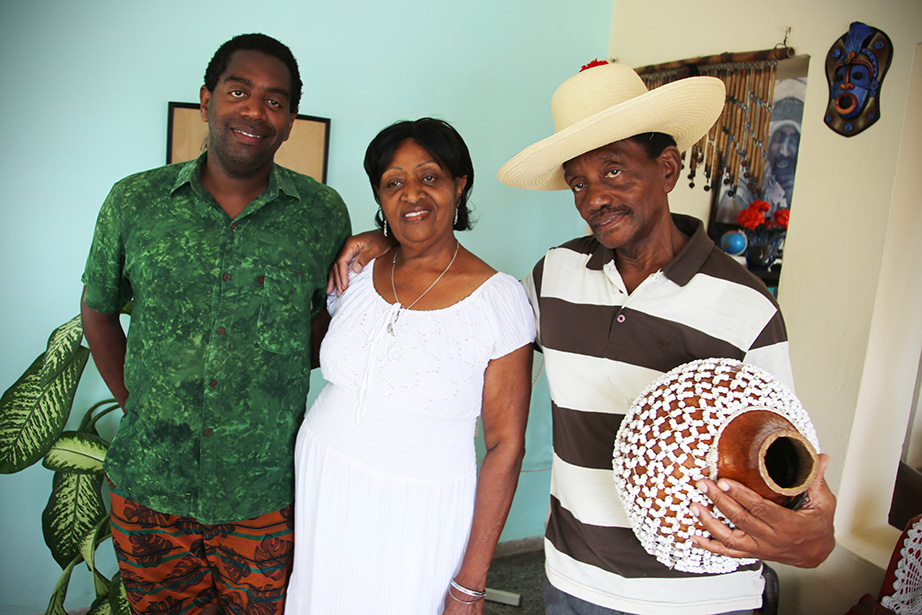South Asian art pigments represent a vibrant aspect of cultural heritage science, offering a glimpse into the rich tapestry of artistic expression in this region. The “Mapping Color in History” project seeks to illuminate the historical significance of these pigments, revealing their implications for the history of pigments used by artists in South Asia. Through careful analysis and an extensive pigment database, researchers aim to bridge the gap in our understanding of how colors were derived and utilized over the centuries. Indian art analysis is expanding beyond Western perspectives to include indigenous knowledge, unearthing a fascinating narrative surrounding these materials. The project encourages collaboration among scientists, historians, and art enthusiasts, ensuring that the legacy of South Asian art pigments continues to resonate and inspire future generations.
Exploring the realm of South Asian colorants unveils a diverse array of naturally sourced and synthetic hues that have adorned artworks across the subcontinent. These visual elements not only enhance the aesthetic appeal of pieces but are essential to understanding the intricacies of South Asian artistic traditions. The examination of these pigments highlights the significant role they play in the broader context of color history, as well as their impact on contemporary practices in art. By analyzing the chemical properties and provenance of these materials, scholars can glean insights into the techniques employed by historical artists and their interactions with cultures and trade. This nuanced exploration of pigments paves the way for a deeper appreciation of the cultural and historic narratives woven into South Asian artworks.
Unveiling the Significance of South Asian Art Pigments
The exploration of South Asian art pigments serves as a vital bridge between contemporary analysis and the historical narratives of color. These pigments are not just materials; they embody cultural expressions and traditions that have evolved over centuries. As researchers like Jinah Kim delve into the intricacies of pigment usage, we begin to unravel the complexities of artistic practices in South Asia. With tools like the Mapping Color in History Project, scholars can go beyond the surface, revealing how these vibrant colors reflect local materials and indigenous knowledge, challenging the assumption that colorants were predominantly European imports.
Moreover, the significance of these pigments extends into the realm of cultural heritage science. Understanding the composition and use of these colors allows us to appreciate not only the artistic values of past generations but also their socio-economic contexts. For instance, examining how colors were sourced and utilized can illuminate trade routes, resource availability, and even colonial influences. This layered understanding enriches the history of pigments and forms a critical part of Indian art analysis, allowing us to construct a more nuanced narrative that acknowledges local innovation alongside global interactions.
Integrating Pigment Databases and Historical Art Analysis
The development of a comprehensive pigment database is paramount for furthering our understanding of historical art. Unlike traditional databases that often focus solely on Western art, the Mapping Color project prioritizes inclusivity by documenting pigments used in South Asian artworks. Such databases not only serve academic purposes but also are practical resources for conservators, educators, and artisans. The detailed information on pigment composition and historical context enhances our ability to trace the evolution of artistic techniques and the materials that defined them, facilitating deeper insights into the interplay between art and culture.
Furthermore, integrating LSI methodologies enriches the database’s potential for academic and practical applications. Incorporating terms like ‘history of pigments,’ ‘cultural heritage science,’ and ‘Indian art analysis’ ensures that users encounter a rich tapestry of related knowledge as they explore. By bridging various disciplines, this holistic approach enhances the dialogue between art history, science, and technology, paving the way for future research. It fosters collaboration across sectors and invites a greater understanding of the value of South Asian art in a global context, ultimately resulting in more informed conservation practices and educational efforts.
Non-Destructive Methods in Pigment Analysis
Understanding the importance of non-destructive methodologies in the study of historical pigments cannot be understated. Given the fragility of ancient artworks, techniques such as x-ray fluorescence and Raman spectroscopy provide invaluable insights without compromising the integrity of the pieces themselves. These methods enable researchers to identify pigment compositions accurately and understand their origins, which is particularly crucial for South Asian art, where many materials and techniques are distinct from their Western counterparts. Non-destructive testing not only preserves the artifacts but also allows historians to build a comprehensive understanding of the artist’s choices in material use.
Moreover, these innovative techniques open the door to exciting archaeological and art-historical discoveries. By applying modern technology to ancient artifacts, researchers can verify historical claims about pigment origins and usage patterns, sometimes revealing indigenous practices that predate European influences. This intersection of science and art humanities aligns with the broader themes of cultural heritage science, urging us to rethink how art connects to its historical and cultural context. In turn, such research enhances the database’s wealth of knowledge, fostering a comprehensive understanding of pigments in South Asian artworks.
The Role of Collaboration in Art Conservation
Collaboration emerges as a central theme in successfully navigating the challenges of art conservation and pigment analysis. Projects like Mapping Color highlight the collective efforts of digital humanists, conservators, and historians working together to create beneficial databases. The expertise of each discipline contributes uniquely to the understanding and preservation of art, ensuring accurate documentation and meaningful analysis of pigments. This model of collaboration is essential for tackling the intricate details surrounding cultural artifacts, particularly those that have lost historical context over time.
Furthermore, embracing interdisciplinary partnerships enhances educational opportunities for students and emerging professionals in the field. By involving teams from various academic backgrounds, current and future scholars gain a multifaceted perspective, deepening their understanding of both the artistic and scientific communities. This interconnected approach not only fosters innovation within cultural heritage science but also cultivates a legacy of informed stewardship among custodians of art and history, as each participant brings new insights to the ongoing conversation about the preservation of our global artistic heritage.
Historical Evolution of Pigments in South Asian Art
The historical evolution of pigments in South Asian art reflects broader shifts in trade, culture, and technology. As the Mapping Color project reveals, many pigments once thought to be European imports may have indigenous origins or alternative sources, reshaping our understanding of the timeline of color use in the region. This newfound knowledge challenges conventional narratives that often overlook the significance of local materials and technologies, lending credence to claims of rich indigenous practices. Early use of natural earth pigments, plant extracts, and minerals illustrates a robust tradition that informed artists long before the arrival of synthetic colors.
By examining the historical timelines of pigment use, researchers can draw connections to socio-political events that influenced artistic expression. Such investigations often uncover forgotten histories of local craft guilds or trade networks that supplied specific materials, revealing a vibrant ecosystem of art production. This intersection of art and history not only fulfills academic inquiries but also enriches cultural heritage studies by promoting a nuanced understanding of how artists navigated their environments to innovate and create. As we build a more comprehensive understanding of the history of pigments, future research can further illuminate the vibrant narratives surrounding South Asian art.
Connecting Modern Art Practices to Historical Techniques
The connection between contemporary art practices and historical techniques offers a unique perspective on the evolution of color use in South Asian art. Artists today, like Babulal Marotia, draw inspiration from traditional methods that have been passed down through generations while incorporating modern technologies and materials. Analyzing the pigments used by contemporary painters provides critical insight into how age-old techniques are preserved and adapted within a modern context. This dynamic interplay illuminates the enduring significance of these historical practices and their relevance in contemporary artistic expressions.
Moreover, this dialogue between past and present reinforces the cultural identity within the artistic community. By situating modern practices within a historical framework of art, artists can engage with traditional narratives while also contributing to their evolution. This mutual exchange fosters a deeper appreciation for cultural heritage and highlights the importance of maintaining connections with historical pigment traditions. As the Mapping Color project continues to document and analyze these practices, it cultivates an appreciation for the vibrant landscapes of color that define South Asian art, ultimately resulting in a richer conversation about its future.
Challenges in Documenting Historical Artworks
Documenting historical artworks presents numerous challenges, particularly when precise details about their origins are unclear. Many South Asian pieces lack specific attributions regarding their date, creator, and location, a situation often exacerbated by historical conflicts and colonial disruptions. This ambiguity complicates the mapping of art and pigments, necessitating rigorous comparative studies and extensive fieldwork to tease out contextualized information. By employing advanced digital tools and collaborative efforts, initiatives like Mapping Color work tirelessly to rectify these gaps, enhancing metadata and providing greater clarity for future researchers.
This challenge of documentation emphasizes the need for more comprehensive research methodologies that integrate art history with scientific analysis. As researchers deepen their inquiries into pigment origins and their application in artworks, they must balance rigorous scholarly approaches with the recognition of historical complexities at play. This includes engaging with local narratives and traditional knowledge that may illuminate aspects that conventional Western art analysis often overlooks. In this context, enhancing documentation practices becomes an ongoing endeavor, vital for preserving the integrity of South Asian art and expanding our collective understanding of its history.
Future Directions in Pigment Research and Database Development
As the field of pigment research continues to evolve, future directions must prioritize diversity and inclusivity in data representation. By expanding the scope of artwork documented in databases like Mapping Color, researchers can ensure that a broader spectrum of South Asian art gains recognition, focusing on various regional practices and techniques. This inclusivity fosters a more balanced understanding of the historical narratives surrounding pigments, allowing new insights to emerge. Additionally, as digital technology advances, leveraging these tools to enhance visualization and accessibility will be crucial in engaging a wider audience.
Ongoing research will also aim to refine the methodologies used for pigment analysis, ensuring they remain adaptable to differing contexts and capable of addressing complex questions. As scientists continue to discover indigenous practices that were formerly overshadowed by European influences, the importance of these findings highlights the need for interdisciplinary collaboration in data development and utilization. By embracing innovative approaches and robust partnerships, the future of pigment research promises to unveil an even richer tapestry of color, culture, and history within South Asian art.
Frequently Asked Questions
What is the significance of South Asian art pigments in the history of pigments?
South Asian art pigments hold immense significance in the history of pigments as they reveal indigenous colorant knowledge and practices dating back centuries. The analysis of these pigments, such as those used in 15th-century Indian manuscripts, has challenged existing narratives that primarily attribute all pigment use to European imports, showcasing the rich and diverse palette utilized by artists in South Asia.
How does the Mapping Color in History project contribute to the understanding of South Asian art pigments?
The Mapping Color in History project enhances the understanding of South Asian art pigments by creating an open-access pigment database that documented the historical usage of pigments in artworks across the region. It enables researchers to explore the origins, compositions, and applications of pigments in South Asian art, facilitating a deeper appreciation of cultural heritage and artistic traditions.
What methods are used to analyze South Asian art pigments in the Mapping Color project?
The Mapping Color project employs various non-destructive methods to analyze South Asian art pigments, including imaging techniques that reveal pigment behavior under different light conditions, microscopy for detailed color mixing analysis, and advanced technologies like x-ray fluorescence and Raman spectroscopy for molecular-level identification.
What role did traditional Indian artists play in the study of South Asian art pigments?
Traditional Indian artists, like Babulal Marotia, play a crucial role in the study of South Asian art pigments by providing insights into contemporary pigment usage and techniques rooted in historical practices. Their expertise helps bridge the gap between modern applications and historical art forms, allowing researchers to understand enduring artistic traditions.
How can researchers access information about South Asian art pigments through the pigment database?
Researchers can access information about South Asian art pigments through the open-access pigment database created by the Mapping Color in History project. Users can search by artwork title, keyword, pigment type, color, artist, and even the location of origin, making it a valuable tool for art historians and cultural heritage professionals.
What challenges are faced when mapping the origins of South Asian art pigments?
Mapping the origins of South Asian art pigments presents challenges due to the often vague historical documentation of artworks, such as vague geographical classifications like ‘North India, 17th-18th century.’ This requires further research and comparative studies to refine attributions and enhance the understanding of the context in which the pigments were used.
How do South Asian art pigments reflect cultural heritage and identity?
South Asian art pigments reflect cultural heritage and identity by showcasing the unique materials, techniques, and color palettes developed within the region. These pigments not only serve as artistic tools but also as expressions of cultural significance, connecting contemporary practices to historical traditions, and fostering a deeper appreciation of South Asia’s diverse artistic narrative.
| Key Points |
|---|
| The Mapping Color in History Project aims to create a comprehensive database of pigments used in South Asian art. |
| Research revealed indigenous sources for cobalt, challenging previous assumptions about pigment imports from Europe. |
| The database is open-access and allows detailed searches by various criteria, providing insights into historical color use. |
| The project utilizes non-destructive scientific methods to analyze pigments, enhancing collaboration between art history and conservation science. |
| Collaboration with contemporary artists helps connect historical practices with modern techniques and materials. |
| Future improvements aim to refine attribution of artworks to specific times and places based on better data. |
Summary
South Asian art pigments form a crucial part of understanding the rich cultural heritage of the region. The ongoing research, spearheaded by the Mapping Color in History Project, is redefining our comprehension of historical pigment usage. By unveiling the indigenous sources of pigments and their applications, this project not only debunks previous myths surrounding European imports but also emphasizes the vibrant and diverse use of colors in South Asian art. As we continue to explore these pigments, we pave the way for more informed interpretations and appreciation of this artistic tradition.



